We celebrate Earth Day annually on April 22. A day that marks the birth of the modern environmental movement. So, this year for Earth Day, let’s talk trash! More specifically, food waste.
Now, you may be saying to yourself, “why on earth are we talking about food waste on a weight loss blog?” Let’s start with the fact that food waste in American (and around the world really) is a big problem – so much so that USDA research tells us the average American household throws out about $1,500 worth of groceries each year.
At a time when food prices are soaring higher and higher every day at the grocery store, this alone may be a good reason to start thinking about how much food you and your family throw out each day. But, when it comes to nutrition, one study reported on average that Americans waste about one pound of food per person EVERY DAY, with most of that food waste in the form of nutritious fruits and vegetables.
So, while many of us purchase fruits and vegetables to eat a healthier diet; we may find that we are guilty (I know I am!) of the occasional produce that gets put in the refrigerator with good intentions, only to go “out of sight, out of mind”. Thus, ending its life in a landfill instead of your belly.
This is the reason that I chose to focus on this important topic for Earth Day. As a dietitian, it breaks my heart to think about how much of these nutrition powerhouses are ending up in our landfills. And, instead of nourishing our bodies, they end up negatively impacting our environment.
But do not worry! Because with a little bit of planning and foresight, we all can find ways to help reduce the amount of food that makes its way into our trashcan.
There are many ways you can help reduce food waste. I’m sharing a few strategies that I have put into place in my kitchen to help reduce my family’s waste. But, keep in mind, just like a good weight loss plan, it is not going to be one-sized fits all. What works for me, may not work for you. The key is to find what does work for you. And remember that you do not have to take everything on all at once, nor do you have to be 100% perfect in your efforts. You may find that you still end up with the occasional produce or bread slice that gets tossed. And that is okay. You are still doing your part by taking those baby steps to try one or two small strategies that will keep you moving in the right direction and making progress. Making your body and the planet a better place!
1. Plan. Plan. Plan.
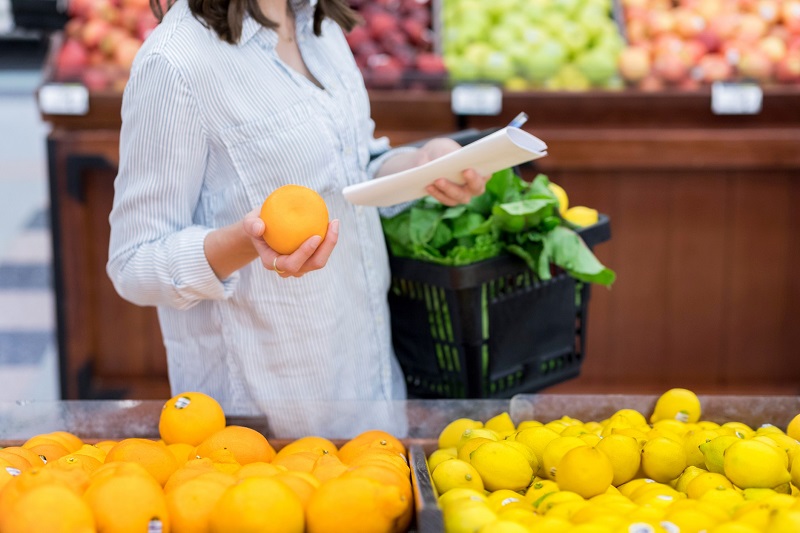
I cannot say this enough. When it comes to minimizing food waste planning is key. When you plan out your meals and snacks for the week, you are more likely to create and stick to a shopping list at the supermarket that is armed with only those ingredients you will need for the week. This reduces your odds of impulse purchases at the store.
Because we all know that those colorful, perfect-looking fruits and vegetables can be enticing in the store, but if you do not have a plan for them, they may be more likely to end up in your trash by weeks’ end than in a recipe or two.
And, when planning out your weekly meals and snacks, bonus points if you plan to use the same ingredients in multiple ways. This helps ensure you are using up an entire ingredient, rather than just needing a little bit for one recipe. So, think Nutrisystem Artichoke and Spinach Stuffed Chicken Breast with a side of asparagus for dinner one night, and then use the remaining asparagus to make an Asparagus Frittata for a quick flex breakfast or lunch later in the week.
2. Save those veggie scraps.
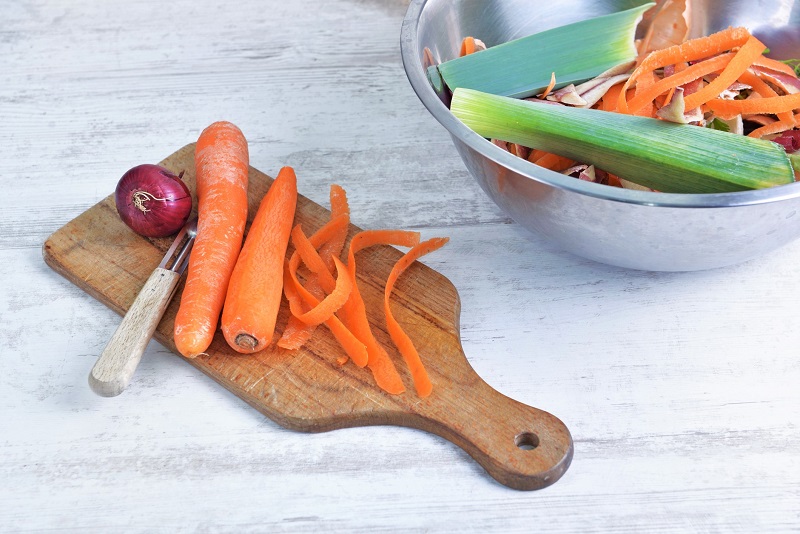
I learned several years ago just how precious all my veggie scraps are when I realized this trick. You can use those scraps to make your own homemade broths! This has allowed me to not only put these scraps to good use, but it has also allowed me to reduce the amount of broth I need to buy at the store! And, I always have broth on hand when I may want to add more flavor while cooking whole grains, like quinoa, rice, or barley.
So, keep those veggies scraps – this includes the stems, skins, tops, and bottoms. Add them directly to a freezer bag and store in your freezer. Continue to add more scraps and when the bag is full, that is when you know it is time to make some broth!
Add the scraps to a large pot and fill the pot with water until the scraps are covered. Bring the water to a boil and then bring it down to a simmer. Simmer on the stove for at least one hour. You can also speed up the process by making all of this in an Instant Pot or pressure cooker. Once done, strain the broth from the veggie scraps. Store the broth in the refrigerator for 3 to 4 days or freeze in glass jars for up to one year.
Most veggie scraps work great. A few examples include onion or garlic peelings, celery leaves and stalk ends, carrot skins, or potato skins. You can get creative and add herbs, spices, or whole garlic cloves directly to the pot while the broth is simmering. And, for more options beyond vegetable broth, I even like to save the bones from store-bought rotisserie chicken, or even those holiday turkey bones or roast scraps. Add these meat scraps to a separate freezer bag in your freezer and follow the same process to make chicken, turkey, or beef broths.
3. Do not overlook the value of frozen foods.
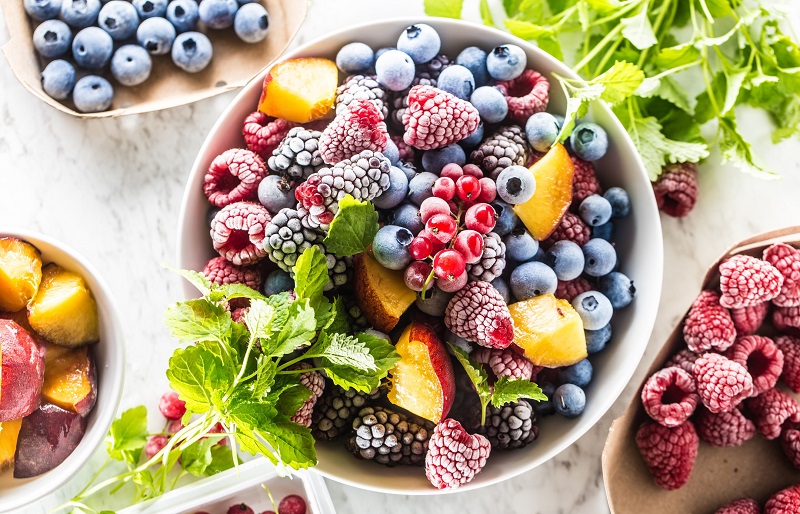
Using frozen foods and meals can also help to reduce food waste. And, don’t think you are missing out on nutrition when you opt for frozen. Many times, frozen foods can be just as nutritious, if not more so, than their fresh counterparts.
Frozen fruits and vegetables can make great side dishes or be incorporated into smoothies. And, frozen meals, like your Nutrisystem entrees, offer a great way to try out new cuisines and flavors without having to invest in multiple ingredients, where only a fraction of what you purchase needs to be used to make the meal. Plus, just the sheer convenience of them while being pre-portioned helps tremendously to minimize food waste.
4. Make ice cube trays your new best friend.
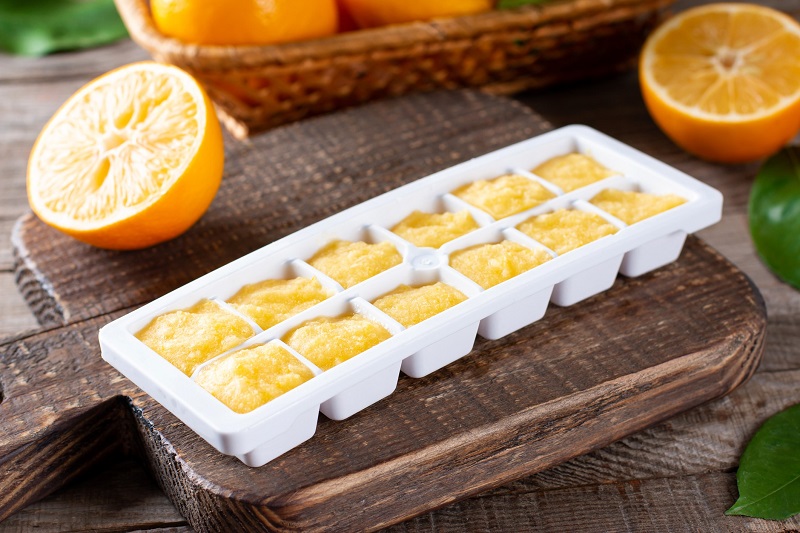
Ice cube trays make a great tool to easily freeze and store ingredients that may be leftovers from a recipe or that may be about to be past their prime. Ingredients that work best are going to be those that add flavor to your next meal!
Did you ever have a recipe that called for just the zest of a lemon or lime? Squeeze the juice into ice cube trays and freeze. Then, the next time you are looking to add citrus to your guacamole, or make a homemade marinate or salad dressing, you have some citrus juice already on hand! Or, you can even use them as ice cubes to add flavor to your water.
Other options for ice cube trays include chopped herbs in oil or water, wine, tomato paste, or pesto. All of these ingredients make a convenient option to pop into a can of tomatoes to make your own homemade pasta sauce, or add to soup, or a stew to enhance the flavor of the final dish.
And, don’t forget about those fruits and veggies sitting in the back of your fridge! Puree them up and add them to an ice cube tray. Once frozen you can pop them out and store the cubes in a freezer bag. Now, you have the perfect nutrition-packed frozen cube to add to your next smoothie or blend with your protein shake!
5. Have a weekly “clean out the fridge” night.
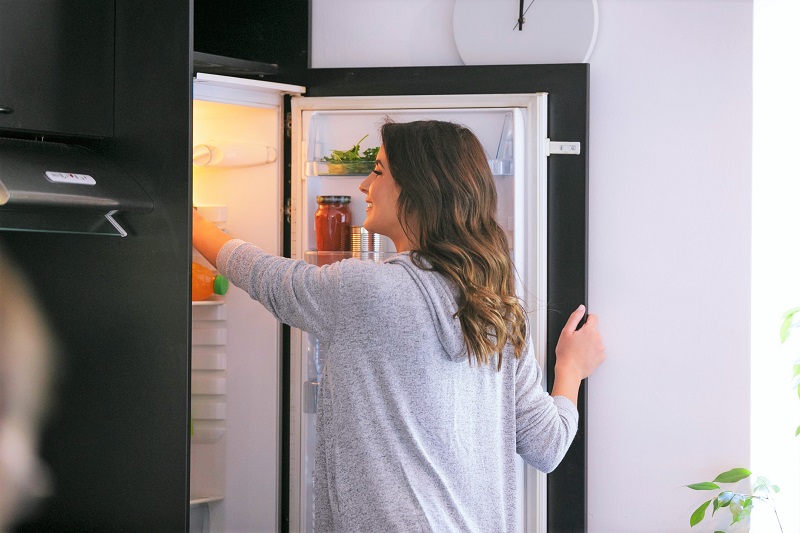
Even with the best of intentions, leftovers can tend to build up in the fridge over the course of the week. This is why I like to set aside one night each week as a “clean out the fridge” night. I love this night because not only does it reduce the food we waste, but it saves me time because dinner is often just a quick reheat! On this night, all leftovers get set out and it becomes a bit of a smorgasbord for my family!
The middle of the week works best for my family to have a “clean out” because it also gives me the opportunity to check in with what is on the meal plan for the rest of the week and see if anything needs to be adjusted in my plan. This allows me to use up other ingredients first that may be starting to go bad. For example, maybe I was planning to have a salad as a side dish later in the week, but the lettuce seems to be starting to turn, so I decide to move it up in the rotation and save the frozen veggies as the side later in the week.
The important thing is to pick a day that works best for you and your family. Maybe the end of the week is a better “clean out” day than mid-week. Plan to still enjoy your Nutrisystem dinner but use your “clean up” to serve up any of those unlimited veggies that may be starting to overstay their welcome in your fridge. Or try planning your “clean out” day on a day that you plan to have a Flex meal.
6. Get creative with recipes.
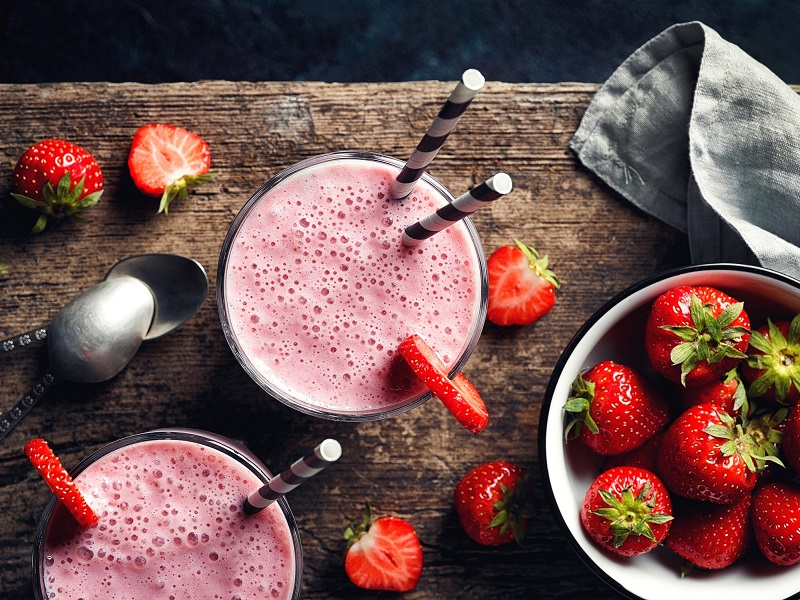
A recipe does not have to be set in stone. This is one of the reasons I love to read recipes. Recipes give me ideas, but then I can add my own twist to it to make it my own! Getting creative and switching up your recipes every now and again can be a lot of fun, but it can also be a great practice to help minimize food waste!
Tweaking your favorite recipes is one way to use up foods you may have on hand. Often, you will find that fruits can be swapped out for any other fruit you have on hand, and vegetables can be swapped out for other veggies that may be in your fridge. Check out The Leaf for recipe inspiration.
Think the Asian Chicken Lettuce Wraps look delicious, but you have ground turkey left over from last night’s Flex dinner? No problem, replace the grilled chicken for ground turkey and enjoy these wraps as a part of your Flex lunch! Or, interested in the Leek and Mushroom Quiche but do not have leeks or mushrooms on hand? No problem! Replace them with whatever veggies you find in your crisper drawer, such as bell peppers, sweet onions, and broccoli! Get creative, have fun, and most importantly reduce food waste in your kitchen!
I am hopeful that these tips from my kitchen help to inspire you to adopt some food waste prevention strategies of your own. But remember, everyone’s kitchen and food waste efforts are going to look a little bit different. What works for you, may not work for your neighbor. And that is okay! We all need to start somewhere, and remember that every little bit, no matter how small, is making a difference! I would love to hear your tips and strategies too! So, please leave a comment and tell me how you are working towards preventing food waste in your home!

